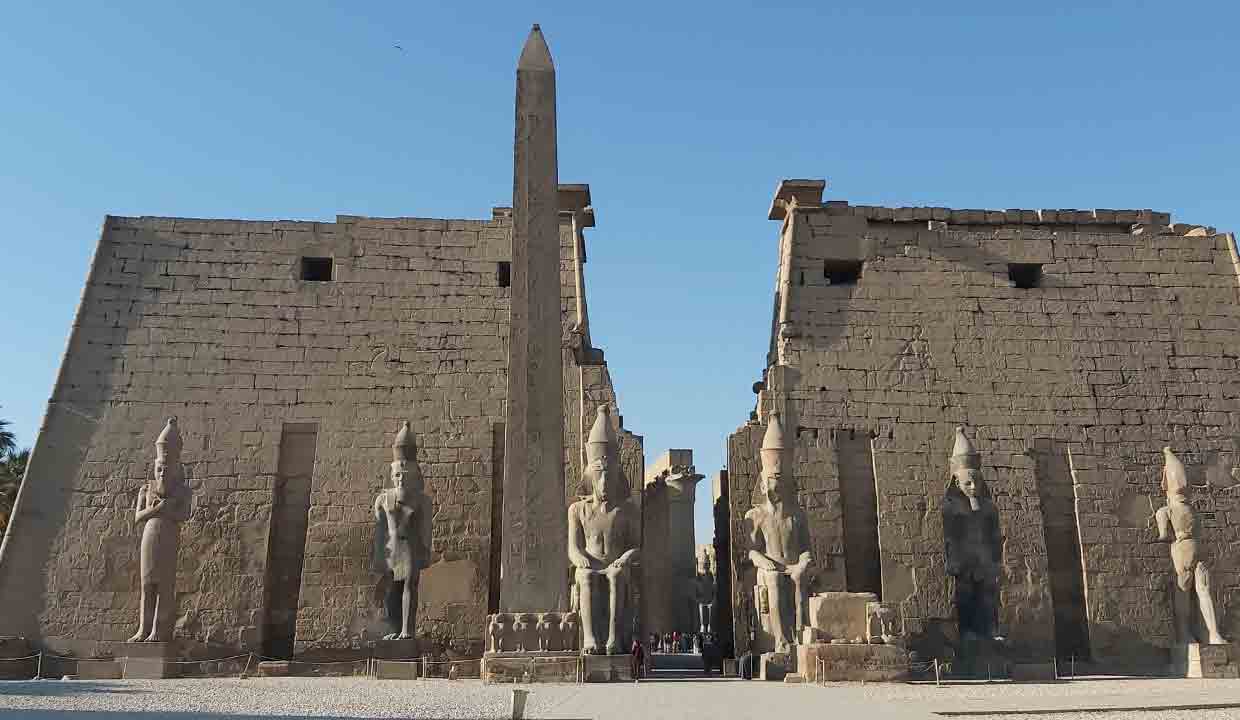Visit Luxor Temple, the epitome of Ancient Egyptian grandeur. With relics from 1400 BCE, every stone and statue tells a captivating tale of time.
Luxor Temple, one of the most awe-inspiring testaments to Ancient Egypt’s architectural prowess, grandeur, and legacy, stands resplendently on the east bank of the Nile River in present-day Luxor. With its construction dating back to approximately 1400 BCE, this revered structure captivates historians, archeologists, and tourists alike with its intricate designs and imposing monuments.
Historical Background
Constructed around 1400 BCE, Luxor Temple is an invaluable relic of Ancient Egypt’s New Kingdom era. Pharaoh Amenhotep III (1390-52 BCE) initiated its construction, intending it to be a house of worship dedicated to Amun, a chief deity in the Egyptian pantheon. Subsequent rulers, notably Ramesses II, contributed additional structures and monuments, thereby enhancing its religious and cultural significance over time.
Design & Architecture
Luxor Temple’s architectural design is a harmonious amalgamation of sanctuaries, kiosks, pylons, and obelisks, meticulously aligned from the north to the south. Its layout distinctly represents the Egyptian theology and the pharaohs’ divine connection.
The entrance is marked by a colossal pylon, erected by Ramesses II, adorned with intricate reliefs depicting his military expeditions. As one proceeds, the magnificent obelisk (one of the original pair, with its twin residing in Paris) and colossal statues of Ramesses II greet the visitors, symbolizing the pharaoh’s might and eternal guardianship over the sacred precinct.
Religious Significance
Luxor Temple was not solely a site of worship but also played a pivotal role in the Opet Festival, a significant religious event in ancient Thebes (modern-day Luxor). This annual festival was a splendid procession where statues of Amun, Mut, and Khonsu were transported from Karnak Temple to Luxor Temple, symbolizing the reunion of the deities and infusing the land with divine energy.
Conservation & Tourism
Since its rediscovery, Luxor Temple has undergone extensive conservation efforts to preserve its original grandeur and maintain its status as an invaluable historical site. It’s a UNESCO World Heritage Site, drawing millions of tourists annually, eager to explore the temple’s timeless beauty and delve into its rich history.
Visiting Luxor Temple
When planning a visit, tourists should note that the temple is open year-round, with evening visits being particularly popular due to the stunning illumination of the ancient structures. Guided tours offer invaluable insights into the temple’s history and architecture, helping visitors fully grasp the extent of its cultural and historical importance.
Conclusion
Luxor Temple, with its roots deeply embedded in the rich tapestry of Ancient Egyptian history, offers more than just a visual feast. It stands as a silent testament to the religious fervor, architectural brilliance, and the enduring legacy of a civilization that continues to fascinate the world. Whether you are a history buff, an architecture enthusiast, or a curious traveler, the temple beckons with its enigmatic allure and promises an unforgettable journey into the past.
